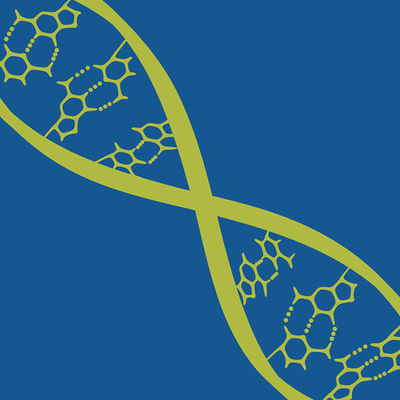Request Demo
Last update 08 May 2025
C-Myc positive High grade B-cell lymphoma
Last update 08 May 2025
Basic Info
Synonyms- |
Introduction- |
Related
3
Drugs associated with C-Myc positive High grade B-cell lymphomaTarget |
Mechanism survivin inhibitors |
Originator Org. |
Active Indication |
Inactive Indication |
Drug Highest PhasePhase 2 |
First Approval Ctry. / Loc.- |
First Approval Date20 Jan 1800 |
Target |
Mechanism MYC inhibitors |
Active Org. |
Originator Org. |
Active Indication |
Inactive Indication |
Drug Highest PhasePhase 1 |
First Approval Ctry. / Loc.- |
First Approval Date20 Jan 1800 |
3
Clinical Trials associated with C-Myc positive High grade B-cell lymphomaNCT06249191
A Phase Ib/II Study Evaluating the Safety and Efficacy of Mosunetuzumab in Combination With DA EPOCH in Previously Untreated C-Myc Rearrangement Positive High-Grade B Cell Lymphomas
This phase Ib/II clinical trial tests the safety, side effects, and effectiveness of mosunetuzumab with chemotherapy for the treatment of patients with untreated, c-Myc rearrangement positive, high grade B cell lymphoma or diffuse large B cell lymphoma. A monoclonal antibody is a type of protein that can bind to certain targets in the body, such as molecules that cause the body to make an immune response (antigens). Immunotherapy with monoclonal antibodies, such as mosunetuzumab, may help the body's immune system attack the cancer, and may interfere with the ability of tumor cells to grow and spread. Chemotherapy drugs, such as etoposide, doxorubicin, vincristine, cyclophosphamide and prednisone work in different ways to stop the growth of cells, either by killing the cells, by stopping them from dividing, or by stopping them from spreading. Giving mosunetuzumab with chemotherapy may be safe, tolerable and/or effective in treating patients with untreated, c-Myc rearrangement positive, high grade B cell lymphoma or diffuse large B cell lymphoma.
Start Date13 Jun 2024 |
Sponsor / Collaborator |
NCT05263583
A Phase 2, Multicenter, Open Label Dose-ranging Study of Sepantronium Bromide in Patients With Relapsed/Refractory c-Myc Rearranged High-grade B-cell Lymphoma (HGBCL)
This is a multi-center Phase 2 study to determine the safety and efficacy of sepantronium bromide (SepB) in adult patients with relapsed or refractory high-grade B-cell lymphoma
Start Date09 Dec 2022 |
Sponsor / Collaborator |
NCT01914718
Dose-adjusted EPOCH-R in Patients With Diffuse Large B-cell Lymphoma: a Phase II Study
The aim of this study is to evaluate the efficacy and toxicity of dose-adjusted EPOCH-R in patients with MYC positive diffuse large B-cell lymphoma.
Start Date01 Feb 2013 |
Sponsor / Collaborator |
100 Clinical Results associated with C-Myc positive High grade B-cell lymphoma
Login to view more data
100 Translational Medicine associated with C-Myc positive High grade B-cell lymphoma
Login to view more data
0 Patents (Medical) associated with C-Myc positive High grade B-cell lymphoma
Login to view more data
16
Literatures (Medical) associated with C-Myc positive High grade B-cell lymphoma01 Apr 2025·Modern Pathology
Cytogenomic and clinicopathological comparison of MYC-positive and MYC-negative High-grade B-cell lymphoma with 11q aberration in the context of other aggressive lymphomas with MYC rearrangement
Article
Author: Rymkiewicz, Grzegorz ; Ott, German ; Pienkowska-Grela, Barbara ; Grygalewicz, Beata ; Szafron, Laura A ; Woroniecka, Renata ; Horn, Heike ; Malawska, Natalia ; Szafron, Lukasz M ; Rygier, Jolanta ; Parada, Joanna ; Nowakowska, Beata ; Blachnio, Katarzyna ; Wojtkowska, Katarzyna ; Bystydzienski, Zbigniew
01 Jan 2024·Neoplasma
Comparative investigation among fluorescence in situ hybridization, DNA- and RNA-sequencing on detecting MYC, BCL2, and BCL6 rearrangements in high-grade B-cell lymphomas
Article
Author: Zhang, Fen ; Liu, Jian ; Chen, Jie ; Cui, Qian ; Liu, Yanhui ; Yan, Jinhai ; Lv, Xinze ; Du, Haiwei ; Chen, Yu ; Hou, Ting
01 Dec 2023·Pathology
TdT-positive high-grade B-cell lymphoma with BCOR and IDH1 mutations
Letter
Author: Yu, Yu-Ting ; Chen, Yi-Lin ; Chang, Kung-Chao ; Medeiros, L Jeffrey ; Lin, Kuan-Yu ; Chen, Ya-Ping
Analysis
Perform a panoramic analysis of this field.
login
or

AI Agents Built for Biopharma Breakthroughs
Accelerate discovery. Empower decisions. Transform outcomes.
Get started for free today!
Accelerate Strategic R&D decision making with Synapse, PatSnap’s AI-powered Connected Innovation Intelligence Platform Built for Life Sciences Professionals.
Start your data trial now!
Synapse data is also accessible to external entities via APIs or data packages. Empower better decisions with the latest in pharmaceutical intelligence.
Bio
Bio Sequences Search & Analysis
Sign up for free
Chemical
Chemical Structures Search & Analysis
Sign up for free




